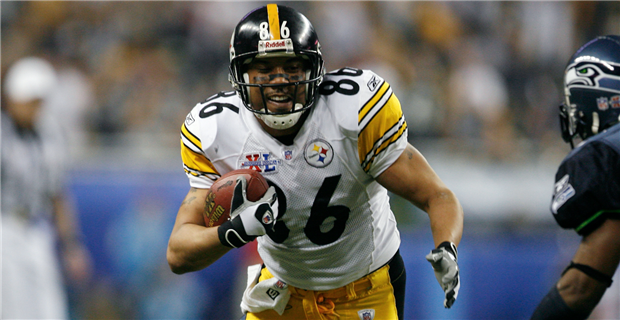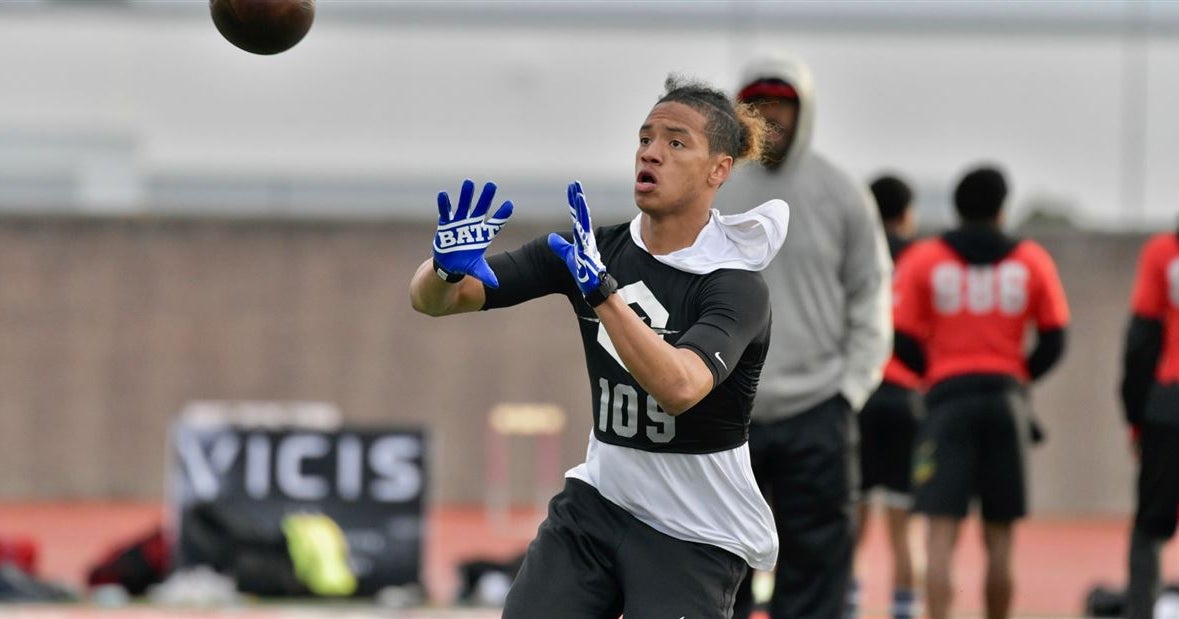College Slot Receivers
The NFL draft is perhaps the world’s longest, and most bizarre, job application process.
Charlie Joiner, a member of the 'Air Coryell' San Diego Chargers teams of the late 1970s and early 1980s, was the first 'slot receiver' to be his team's primary receiver. While the timeline differs for individual each player, wide receivers generally hit their peak between the ages of 23 and 30. The slot receiver gets the benefit of pre-snap movement, making it easier to avoid press coverage off the line of scrimmage. Additionally, the slot receiver has a “two-way go” off the release, giving the cornerback more to think about. Slot receivers, thanks to their alignment on the field, can run routes breaking both inside and outside.
Over the course of a few months NFL hopefuls will have their lives picked apart by a small group of individuals who hold in their hands the keys to the proverbial castle. Every aspect of their lives are examined. Their best moments. Their worst. With more “applicants” than jobs available, teams are sometimes forced to make difficult decisions, and that leaves incredibly talented applicants on the outside looking in when the final decisions are made.
Think about the last time you applied for a job. What you put on your resume to separate yourselves from the rest of the applicants. The things you said during the interview to make you a more attractive candidate. With such a high level of competition, every little thing you can do to make yourself stand out can mean the different between starting a new gig, or looking for another shot.
Now think about this year’s wide receiver draft class. Many consider it to be a “historic” group of talent. Daniel Jeremiah, the top draft analyst for the NFL Network, declared before the scouting combine that he had 27 players with a Day 1 or Day 2 grade on his overall board at the wide receiver position.
I’ve got 27 wide receivers with top 3-round grades in this draft. And consider average 31 are taken. We had a max of 35 taken in, I believe that was in 2017. So this is a really phenomenal group of wideouts. Not all those guys are going to go early. They’ll end up spreading throughout the draft. But it’s really a good group.
With such a deep candidate pool, how does one stand out? Conversely, what might cause a candidate to slide?
That brings us to Justin Jefferson.
The LSU wideout put up impressive numbers for the Tigers last season during their run to a National Championship. He also was one of the best performers at the Scouting Combine, as his 4.43 40-yard dash was a bit unexpected, but showed that he has the long speed to function at a high level in the NFL. Yet there are many who express reservations about him.
The main reservation for many? A matter of potential usage in the NFL, and the notion this his skill set is a bit more limited than some of the other options in the draft. His huge numbers last season might be due to the fact that he operated nearly exclusively out of the slot. Jefferson, according to charting data from Pro Football Focus, played 870 snaps last year from a slot alignment.

Just five of those were on the outside.
While 11 offensive personnel (three wide receivers, one tight end and one running back) has become a base personnel package for the majority of NFL teams, making slot receiver a starting position, how that spot is used functionally makes it a bit of an easier position to play. The slot receiver gets the benefit of pre-snap movement, making it easier to avoid press coverage off the line of scrimmage. Additionally, the slot receiver has a “two-way go” off the release, giving the cornerback more to think about. Slot receivers, thanks to their alignment on the field, can run routes breaking both inside and outside.
College Slot Receivers Football Games

Boundary receivers, however, are limited with what they can do working towards the outside. On routes where they break towards the sideline, they either have to cheat their alignment towards the middle of the field pre-snap (perhaps indicating to the CB what they are doing) or create space with their route, perhaps by stemming inside first and then breaking outside.
:no_upscale()/arc-anglerfish-arc2-prod-dmn.s3.amazonaws.com/public/CVWMUZG6ZSOPWXXS5DYTVMAUZ4.jpg)
Slot Receivers In The Nfl
Therefore, receivers with a proven track record of playing outside, and beating press coverage, might be more valuable commodities. If it is harder to find that type of player, teams will be willing to pay a premium for them in terms of draft capital, and wait to draft players whose job might be easier in the league.